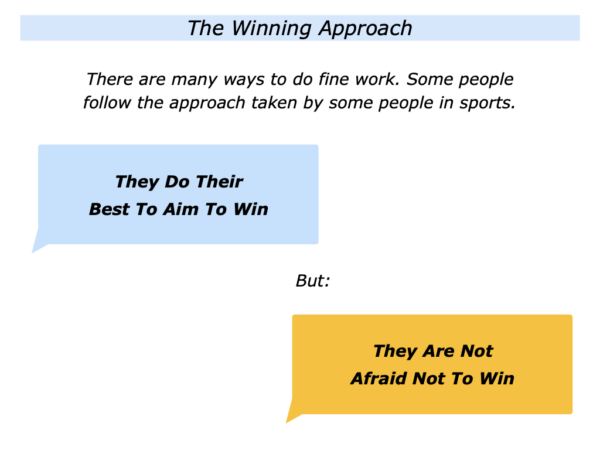
There are many ways to do fine work. Some people follow the approach taken by some athletes in sports. They do their best to aim to win but they are not afraid not to win.
Some people find this approach to be liberating. It frees them to flow, focus and do fine work. They then aim to finish properly and, as a by-product, sometimes find fulfilment. Let’s explore some aspects of this approach.
There Are Different
Views About Winning
Different people have different views about what constitutes winning. Here are some of these views. Winning can mean:
Winning a prize … Being true to yourself … Doing your best … Helping other people … Doing superb work … Getting win-win solutions.
John Wooden, the famous basketball coach, never talked about winning but his teams won many championships. He encouraged players to always do their best and, in this way, achieve peace of mind. He said:
“Success comes from knowing that you did your best to become the best that you are capable of becoming.”
Some people take a similar approach in their lives or work. Bearing in what they can control, they aim to become the best kind of person, athlete, artist, carpenter or professional they can be.
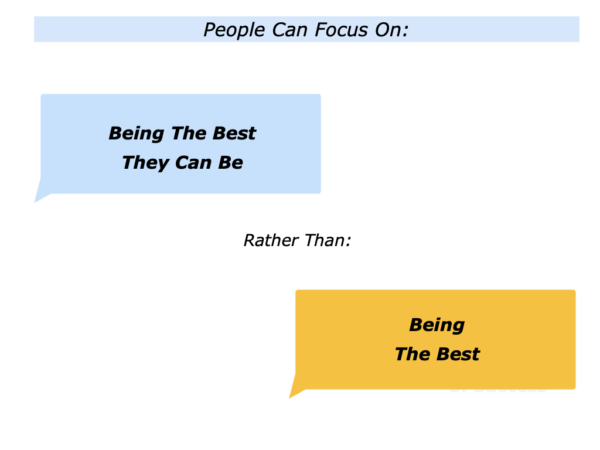
Some individuals take another approach. They focus on what they can’t control and compare themselves to others. This can be a spur but it can also have downsides. They may only feel satisfied if they are continually seen as being the best in their field.
Some individuals aim to become the best they can be and, as a by-product, are seen as the best in their field. They then continue to build on what they can control, however, and focus on how they can make the best use of their talents.
There Are Different
Approaches To Aiming To Win
Different people may follow different approaches when aiming to achieve their definition of winning. Here are some they may follow. They may aim:
To build on their strengths, follow strategies that work and achieve success;
To focus on a clear purpose, follow their principles and achieve their picture of success;
To do what they believe in, do the basics and, when appropriate, add the brilliance.
Whatever approach they take, people often prepare properly. They then aim to be fully present, perform superb work and do their best to deliver peak performances.
Some people also follow the ‘win the next moment’ approach. Paul O’Connell, the former Irish Rugby Union player, described this in talk he gave to a Pendulum Summit in 2018.
Paul called the approach ‘mindfulness for dumb rugby players’. The team’s coach Joe Schmidt kept giving his players the following message.
Forget the mistake you have made, forget the try you have scored. Be fully present and win the next moment in front of your face.
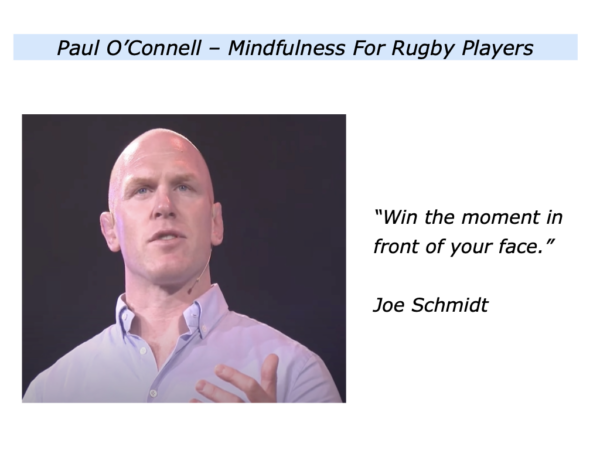
Different people follow this approach in different ways. Some apply it to doing their best in the next moment, the next hour or the next day. They may do this when aiming:
To perform the next task superbly when doing a piece of work … To stay healthy one day at a time when recovering from an addiction … To focus on one shot or one game at a time when playing a sport.
People who take this approach do their best to achieve their definition of winning. Sometimes they reach their chosen goals, sometimes they don’t. They may then focus on the next theme.
There Are Different
Responses To Not Winning
Different people respond in different ways to not winning. Here are some of these responses.
Some people see things in perspective and focus on what is important in life. They continue to have a positive attitude, build positive relationships and make a positive contribution during their time on the planet.
Some people focus on what they have already gained in life. They have a sense of gratitude, count their blessings and build on both their personal and professional assets.
Some people respond to successes and setbacks by enjoying the journey and focusing on continuous improvement. They aim to build on that they do well and tackle areas for improvement.
Cath Bishop described elements of this approach in her book The Long Win. An Olympic Medal Winner in rowing, she encourages people to explore their definitions of success.
Some Olympic Gold Medal winners get an immediate high. But for some the main emotion is relief rather than joy. Some then find it hard to develop a new sense of purpose.
Cath suggests focusing on the long-term wins in life. Here is an excerpt from an article she wrote on this theme.
What Does Winning Really Mean?
Of course, in sport it seems so temptingly obvious and simple – it’s about crossing the line first, being on the top step of the podium, holding a trophy.
Yet those are all split-second moments. Those need to be translated into meaning beyond that split-second if they are to be long-lasting positive experiences.
When they aren’t translated, that allows a world to exist where it’s possible for an Olympic gold medallist to walk back into the village feeling ‘empty’ and ‘hollow’, or where ‘winning sport stars’ can actually be suffering depression and worse.
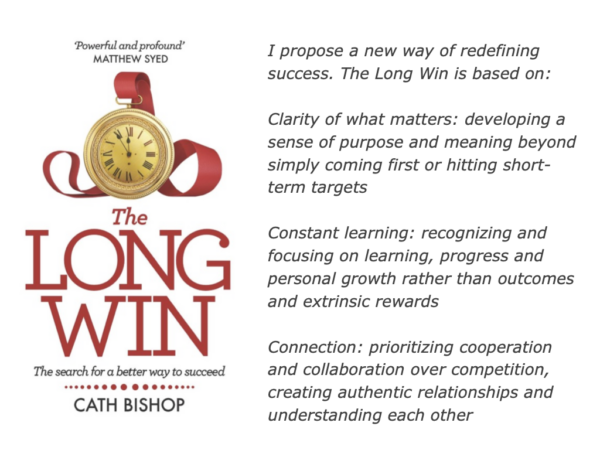
The best sports coaches are those who are not afraid to ask their athletes what they want to do after sport.
They are strong enough to ask and listen to the deeper motivations that have driven their athletes to be in this unnatural high performance environment striving to be the best in the world.
That’s the beginning of building a wider perspective and deeper meaning about the extreme and often short-lived experience of elite sport. Purpose starts a conversation about success that goes beyond winning.
It’s about a longer-term timeframe, never just a split-second. It’s about a wider perspective, not a narrow view. And it’s about people’s whole lives, as individuals and communities, not measured in short-term results, but longer-term experiences.
There are many ways to do fine work. Some people aim to do their best to win but they are not afraid not to win. They choose to enjoy the journey and develop on the way towards achieving their aims.
Let’s return to your own life and work. Looking ahead, can you think of a situation where you may want to follow elements of this approach? How can you do this in your own way?
If you wish, try tackling the exercise on this theme. This invites you to complete the following sentences.
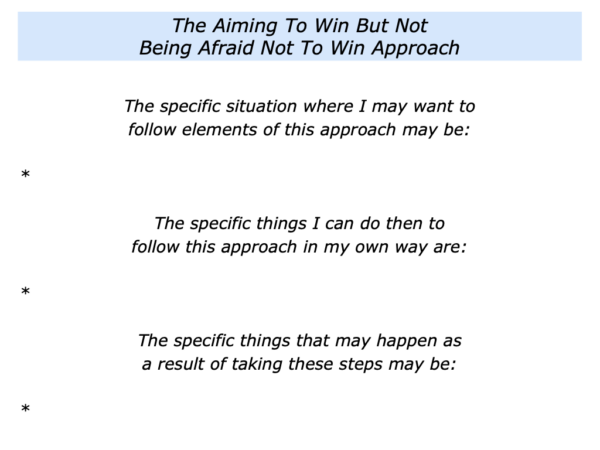






Leave a Reply